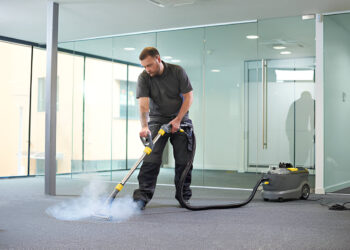Choosing the right dance studio is crucial. It can really change your experience. What should you look for when picking a dance class? If you’re thinking about starting dance lessons, you might be unsure about which studio to choose.
This article will help you understand the key things to consider when selecting a dance studio.
1. Instructors
Finding the right dance teacher is super important. For parents, it’s key to pick a teacher who knows how to teach kids. They should be patient and respectful, not just good at dance steps.
It’s a good idea to ask about the teacher’s teaching quality. Check their past experience, read about their background, and see if they keep up with current dance trends. Most of the time, experienced dancers pick a studio because of its teachers. I did the same. Take your time to find a teacher who teaches in a way that works for you and has a personality you like. A great dance teacher loves sharing their art.
2. Location of the Dance Studio
The studio’s location matters, depending on your goals. If dancing is just for fun, you might care more about how close the studio is to your home or work. I started dancing because it was easy to get to classes at my school.
For parents, it’s important that the studio is in a safe area and easy to reach. Think about whether your kids can make it to classes without missing school or other activities. How long does it take to get there? If you’re a beginner, a far studio might make you skip classes. Busy people value a nearby studio more. On the other hand, if you’re a professional, you might travel far for the right teacher. Pros often don’t mind traveling for good teaching.
3. Dance Studio Hours
Most dance studio have classes in the evening, around 6, 7, or 8 PM, and they’re usually open more in the summer. They’re often open 5 or 7 days a week. For adults, the number of classes depends on how many dance styles you’re learning. If you’re learning 5 styles, you might have 2 classes, and if it’s 10 styles, maybe 4 classes.
4. Joining a Dance Class: What to Keep in Mind
When you first join a dance classes near me, especially for kids who are just starting, there are some things to think about. In group classes, beginners learn basic steps and focus more on how to move well. There’s not much partner dancing in these classes. Often, partners are chosen randomly to show a dance move. Adults who are new to dancing might get paired up randomly too, or they can bring their partner or a friend to learn together. On the other hand, if you’re a professional dancer, picking a dance partner is a big deal. You look for someone who matches your height, body shape, and even personality. You’ll usually dance with this partner, though sometimes you might switch for practice. In private lessons, you’ll learn dance routines designed to show off both of your strengths.
5. Costs of Dance Classes
Dance schools often charge a set fee every month, and this can change depending on where you are and which dance club you go to. It’s usually between 22 and 44 euros. But, if you’re taking social dance classes, you might be able to pay each time you go. Professional dancers also have to pay yearly fees to their dance federation. For lessons with your own coach or special teachers, the cost can range from 11 to 300 euros an hour. Classes are usually 45 minutes to 2 hours long. You can’t take more than four private lessons a week because you need time to practice what you’ve learned. If you have four lessons, you’ll be practicing a lot in the studio.
Read also Ways To Prepare Yourself For A Dance Class.
6. What to Look for in a Dance Studio
To really get the most out of dance lessons, the studio needs to have certain features:
- The Dance Floor: Don’t sign up for classes if the dance floor isn’t right. Stay away from hard floors like cement or tile, which can be bad for your balance. A good dance floor should be kind to your feet and knees. If you’re competing, try to practice on a floor like the one you’ll perform on.
- Mirrors: In a dance studio, mirrors are super important. They’re not just for looking at yourself; they help you see your movements as others see them. This helps you correct your steps right away. Teachers also use mirrors to watch more students at once. Make sure the mirrors don’t distort how you look.
- Quiet Environment: A quiet place helps you focus and learn better. Dancing isn’t just physical; it requires quick thinking and a good memory. You need to concentrate without noisy distractions.
Other Important Features:
- High-quality sound system.
- Good lighting.
- A place to change clothes.
- Showers (since dancing makes you sweat).
- Air conditioning (ideal temperature is 18° to 24° C).
- Enough space for the type of dances you’re learning, especially for standard dances which need more room.
- A clean, spacious, and well-equipped studio makes a huge difference. It’s where dancers can forget the world and focus on dancing.



